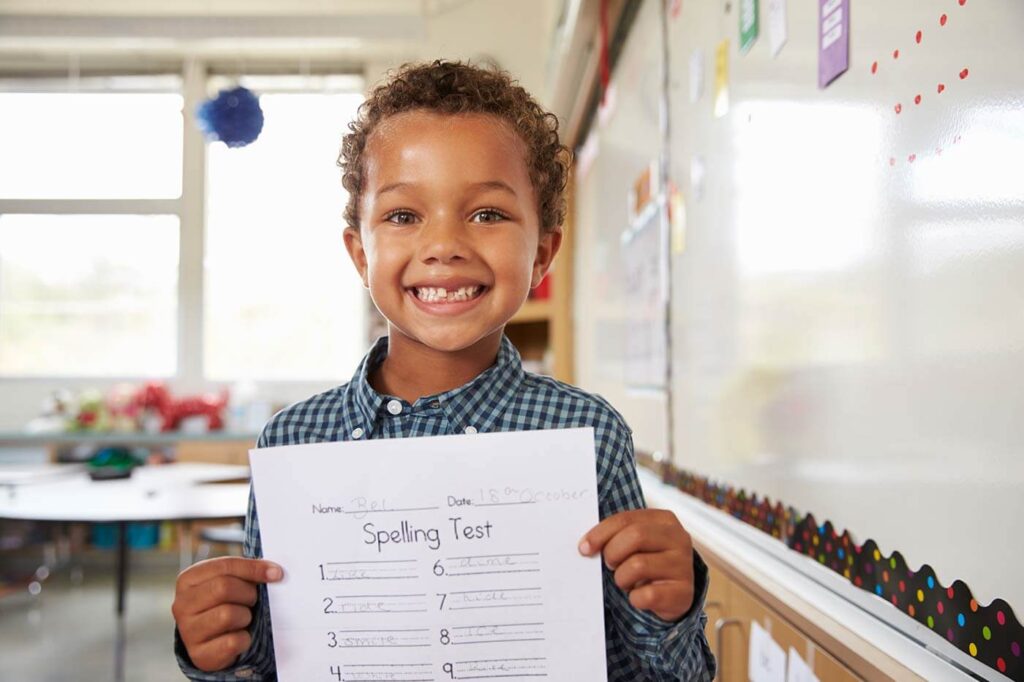In education, understanding and addressing learning gaps is crucial for ensuring that all students receive the support they need to succeed. As educators, it is essential to identify and address these gaps to provide targeted interventions and support. VTJ will discuss the different types of learning gaps that students may experience and offer insights into how teachers can effectively identify and solve them.
What Are Learning Gaps?

Learning gaps, also known as educational or knowledge gaps, represent disparities in a student’s comprehension and proficiency within a particular subject or skill area. These gaps occur when students fail to grasp and retain essential concepts, information, or skills necessary for their grade level or academic progress. Learning gaps can stem from a variety of sources, including differences in prior education, varying learning styles, inappropriate instructional methods, or even external factors such as distractions or personal circumstances.
These gaps are significant because they hinder a student’s ability to build upon their knowledge foundation. Unaddressed learning gaps can lead to a cascade effect, where students struggle to keep up with new material, resulting in frustration, disengagement, and, in some cases, academic underachievement. Therefore, recognizing and addressing learning gaps is an essential responsibility for educators.
Explore More Teaching Tips: What is Effective Teaching? 13 Effective Teaching Practices
5 Different Types Of Learning Gaps

There are five primary categories of learning gaps that students may encounter, regardless of their learning environment. Familiarizing ourselves with these types of learning gaps can be instrumental in better supporting our students. Recognizing these gaps can lead to more effective interventions tailored to each student’s unique needs. Here is a breakdown of the five main types:
- Skills Gaps: These gaps manifest when a student lacks the necessary practice and mastery of essential skills.
- Motivation Gaps: Motivation gaps arise when a student lacks the desire or motivation to engage with and learn new concepts. This can result in disinterest, reduced participation, and hindered learning progress.
- Knowledge Gaps: Knowledge gaps occur when a student lacks access to accurate and comprehensive information or has not been exposed to the correct knowledge. This can lead to misconceptions, incomplete understanding, and errors in applying knowledge.
- Environmental Gaps: Environmental gaps arise when a student lacks access to a conducive learning environment. Factors such as a lack of necessary resources, distractions, or inadequate support at home can impede effective learning.
- Communication Gaps: Communication gaps occur when a student struggles to understand or express concepts and expectations clearly. This can hinder effective teacher-student interactions and the overall learning experience.
Discover Related Guides: Lesson Objectives (Learning Objectives): How to Write in 4 Steps
Learning Gaps Examples

Learning gaps can take on various forms, impacting students across a range of subjects and skills. Below are real-life examples illustrating each of the five main types of learning gaps:
- Knowledge Gaps: a student may have a knowledge gap in history if they are unaware of significant historical events or lack understanding of key concepts like the causes of World War II.
- Skills Gaps: a student may have a skills gap in writing if they struggle with organizing their thoughts, constructing coherent paragraphs, or using proper grammar and punctuation.
- Motivation Gaps: a student with a motivation gap in mathematics may not feel interested or see the relevance of learning algebra, leading to a lack of effort and understanding in that area.
- Environmental Gaps: a student from a disadvantaged background may have an environmental gap if they lack access to educational resources, such as books or technology, which can hinder their learning and create gaps in knowledge across various subjects.
- Communication Gaps: Students with a communication gap in language learning may struggle to express themselves clearly or understand instructions, impeding their language acquisition and overall proficiency.
Explore More: Project-based learning (PBL): Benefits, Examples & Ideas
Why Do Learning Gaps Appear?

Learning gaps can emerge from various factors. The sudden shift to virtual learning during the pandemic posed significant challenges for both students and educators. While teachers adapted swiftly, many students now find themselves grappling to bridge the knowledge deficits resulting from months of remote or hybrid learning. A recent McKinsey study revealed that, in the aftermath of the pandemic, K-12 students, on average, lagged behind by five months in mathematics and four months in reading.
Furthermore, classroom sizes are growing, partly due to teacher shortages. With increasing numbers of students to oversee, teachers face difficulties in gauging individual students’ academic progress and identifying specific areas where they may need support. Providing personalized assistance becomes more challenging as student-to-teacher ratios rise. Additional factors contributing to learning gaps encompass a range of circumstances. These include students missing class frequently due to family-related issues, chronic illness, or contending with mental health challenges or learning disabilities. Addressing these multifaceted reasons for learning gaps is pivotal for fostering equitable educational opportunities for all.
Related Guides: What Is Scaffolding in Education? Scaffolding Learning Strategies
How To Identify Learning Gaps In Your Students

Identifying learning gaps is a critical step for educators to provide targeted support and ensure comprehensive student learning. Here are strategies and techniques to help teachers recognize learning gaps in their students:
- Formative Assessments: Regularly conduct formative assessments such as quizzes, polls, or short assignments to gauge students’ understanding of ongoing topics. Analyze the results to identify areas where many students struggled or where performance was consistently weak.
- Observation: Pay close attention to students during class discussions, activities, and assignments. Observe their level of engagement, participation, and the quality of their responses. Lack of involvement or incorrect answers may indicate learning ga
- Homework and Classwork Analysis: Carefully review students’ homework and classwork for errors or misunderstandings. Consistently incorrect answers or misconceptions can point to specific learning gaps.
- Standardized Tests: Use standardized tests and benchmark assessments to measure students’ performance against established standards. This can help identify broader gaps in the curriculum.
- Curriculum Planning: Analyze the curriculum and learning objectives to pinpoint potential areas where students might encounter challenges. Cross-reference this with student performance to identify gaps.
Continue Learning: 6 Types of Assessment in Education & How to Use Them
See More Strategies: How to Deal with Difficult Parents: 10 Best Strategies
5 Tips On Solving Learning Gaps

Normalize Getting Help
Creating a classroom culture where seeking help is normalized is essential for addressing learning gaps effectively. Many students may hesitate to ask for help due to fear of judgment or feeling like they should already know the material. As an educator, you should emphasize that asking questions and seeking clarification is a a way to deepen understanding.
To normalize getting help, encourage open communication and create a safe space for students to express their concerns. Foster a supportive environment where students feel comfortable reaching out for assistance when they encounter learning gaps. Explain to students that everyone learns at their own pace and that seeking help is a natural part of the learning process.
Explore More: Leadership Styles in Education: 8 Effective Ways to Lead
Discover Related Guides: Meaningful Feedback for Students: Importance, Tips and Examples
Form Authentic Connections
Building strong connections with your students is key to understanding their individual needs and learning styles. When you have a strong teacher-student relationship, students are more likely to trust you and feel comfortable sharing their challenges and learning gaps.
Let’s take the time to get to know your students on a personal level. Show genuine interest in their lives, hobbies, and aspirations. Engage in meaningful conversations and actively listen to their thoughts and concerns. Additionally, consider incorporating student interests and experiences into your lessons. By demonstrating that you understand and value their unique perspectives, you create a supportive learning environment that encourages students to actively participate and seek solutions to their learning gaps.
Continue Learning: What Is Inquiry-Based Learning (IBL)? Types, Benefits & How to Use
Explore More: How to Teach Writing Skills to Students Effectively in 8 Simple Steps
Use Classroom Technology
Leveraging classroom technology can be a powerful tool in addressing learning gaps. Educational apps, online resources, and interactive platforms offer various benefits for personalized learning experiences tailored to individual needs. Students can engage in interactive activities that adapt to their skill level, allowing them to focus on areas where they need improvement. These tools can also track student progress, providing valuable data to identify specific learning gaps and inform instructional decisions. Integrating technology into your teaching can enhance student engagement and motivation.
Discover Related Guides: What is Independent Learning and How It Works: A teacher’s guide
Check-In Early And Assess Often
Regularly checking in with your students and assessing their progress is crucial for identifying learning gaps early on. By doing so, you can intervene promptly and prevent the gaps from widening. Implement formative assessments, quizzes, and informal observations to gauge students’ understanding. These assessments can be both formal, such as quizzes or tests, and informal, such as class discussions or exit tickets. By assessing often, you gain insights into students’ comprehension levels and identify areas where they may be struggling.
Related Guides: 13 Types of Students in the Classroom and How to Deal with Them
Continue Learning: 10+ Strategies of How to Teach Reading Comprehension in the Class
Make It Part Of Your Professional Development
Continuously investing in your professional development is essential for enhancing your ability to address learning gaps effectively. As an educator, staying updated with the latest research, instructional strategies, and assessment techniques is crucial for supporting your students. Engage in collaborative discussions with colleagues to share insights and learn from each other’s experiences. Reflect on your teaching practices and seek feedback from mentors or administrators to identify areas for improvement.
By making professional development a priority, you can expand your knowledge and skills, enabling you to better support your students in overcoming learning gaps. Continuously refining your teaching practices ensures that you are equipped with the most effective strategies and approaches to address the diverse needs of your students.
Explore More: 5 Types of Teaching Styles (Their Pros & Cons)
See More Strategies: Why Students Get Bored & How to Engage Bored Students in the Class
Recognizing and addressing learning gaps is a responsibility for educators. Through this article by VTJ, teachers can create an inclusive and supportive learning environment. Through ongoing assessments, personalized instruction, and building strong connections with students, educators can empower their learners to overcome these gaps and achieve academic success.






